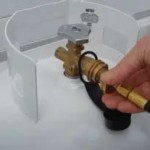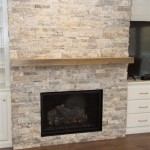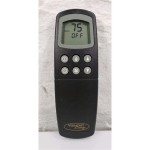Best Electric Fireplaces for Heat: A Comprehensive Guide
Electric fireplaces have emerged as a popular heating solution for numerous reasons, including their ease of installation, safety features, and aesthetic appeal. Unlike traditional fireplaces that require venting and fuel, electric fireplaces offer a convenient and often more energy-efficient way to add warmth and ambiance to a room. This article explores key aspects of electric fireplaces specifically for heat, examining different types, features to consider, and how to select the best model for specific needs.
Types of Electric Fireplaces
The electric fireplace market offers a diverse array of options, each with unique design characteristics and installation requirements. Understanding these differences is crucial for making an informed decision.
Wall-Mounted Electric Fireplaces: These models attach directly to a wall, offering a space-saving solution and often serving as a focal point in a room. Wall-mounted fireplaces generally feature a sleek, modern aesthetic and are relatively easy to install, requiring only a nearby electrical outlet. They often include adjustable heat settings and flame effects, providing both warmth and visual appeal.
Insert Electric Fireplaces: Designed to be inserted into an existing fireplace opening, these models offer a way to revitalize an unused or inefficient traditional fireplace. Insert electric fireplaces provide the look and feel of a traditional fireplace without the mess and maintenance associated with wood-burning or gas-fueled options. Installation typically involves simply sliding the insert into the existing firebox and plugging it into an electrical outlet.
Freestanding Electric Fireplaces: These are portable units that can be easily moved from room to room. Freestanding fireplaces come in various styles, from traditional mantel designs to contemporary console units. They offer flexibility and convenience, making them ideal for supplemental heating in different areas of a home. Most freestanding models include adjustable heat settings and realistic flame effects.
Electric Fireplace Stoves: Mimicking the look of traditional wood-burning stoves, these electric fireplaces offer a rustic and charming aesthetic. Electric fireplace stoves are typically compact and energy-efficient, making them suitable for smaller spaces. They often feature a realistic flame effect and adjustable heat settings, providing both warmth and visual appeal.
Entertainment Center Electric Fireplaces: These units combine the functionality of an entertainment center with the warmth and ambiance of an electric fireplace. They often feature storage space for media components and decorative items, making them a practical and stylish addition to a living room.
Key Features to Consider for Effective Heating
Not all electric fireplaces are created equal when it comes to heating performance. Several factors influence their ability to efficiently and effectively warm a space. Selecting a model with the right features is critical for achieving optimal heating results.
Heating Capacity: The heating capacity of an electric fireplace is typically measured in BTUs (British Thermal Units) or wattage. A higher BTU or wattage rating indicates a greater heating capacity. Determining the appropriate heating capacity for a specific space depends on factors such as room size, insulation, and climate. Generally, a rule of thumb is to use 10 watts of heating power per square foot of living space.
Heating Technology: Electric fireplaces utilize different heating technologies, including infrared, ceramic, and fan-forced heating. Infrared heaters produce radiant heat, which directly warms objects and people in the room, providing a more consistent and comfortable heating experience. Ceramic heaters use ceramic plates to generate heat, offering efficient and even heat distribution. Fan-forced heaters use a fan to circulate warm air, providing rapid heating but potentially creating more noise.
Adjustable Thermostat: An adjustable thermostat allows for precise temperature control, enabling users to maintain a comfortable room temperature and conserve energy. Thermostats often feature multiple heat settings, allowing for customized heating based on specific needs and preferences. Some models also include a digital thermostat with programmable features, such as timers and automatic shut-off.
Zone Heating Capabilities: Electric fireplaces are particularly well-suited for zone heating, which involves heating only the rooms that are being used, rather than heating the entire house. This can lead to significant energy savings compared to central heating systems. Electric fireplaces can be easily moved to different rooms as needed, providing targeted heating and reducing energy consumption.
Safety Features: Safety is a paramount consideration when selecting an electric fireplace. Look for models with features such as overheat protection and cool-touch housings to prevent accidental burns. Overheat protection automatically shuts off the fireplace if it detects excessive heat, preventing potential fire hazards. Cool-touch housings ensure that the exterior surfaces of the fireplace remain cool to the touch, minimizing the risk of burns.
Remote Control: A remote control offers convenient control over the fireplace's features, including heat settings, flame effects, and timer functions. This allows users to adjust the fireplace's settings from a comfortable distance, enhancing convenience and ease of use. Some remote controls also include a thermostat function, allowing users to adjust the room temperature directly from the remote.
Flame Effect Technology: While not directly related to heating performance, the realism and adjustability of the flame effect can greatly enhance the overall experience of using an electric fireplace. Advanced flame effect technologies create realistic and mesmerizing flames that mimic the look of a traditional fire. Adjustable flame settings allow users to customize the flame intensity, color, and speed, creating a personalized ambiance.
Factors Influencing Heating Performance
The effectiveness of an electric fireplace for heating depends not only on the features of the unit itself but also on various external factors that influence heat distribution and retention.
Room Size and Insulation: The size of the room and the level of insulation play a crucial role in determining the heating requirements. Larger rooms require more heating power to maintain a comfortable temperature, while well-insulated rooms retain heat more effectively, reducing the need for continuous heating. Poorly insulated rooms may require a more powerful electric fireplace or supplemental heating sources to achieve optimal comfort.
Climate and Ambient Temperature: The prevailing climate and the ambient temperature outside also influence the effectiveness of an electric fireplace. In colder climates, a more powerful electric fireplace may be necessary to provide sufficient heating. Conversely, in milder climates, a smaller unit may suffice. The ambient temperature outside can also affect the rate of heat loss from a room, influencing the heating requirements.
Placement and Air Circulation: The placement of the electric fireplace within a room can affect the distribution of heat. Placing the fireplace in a central location or near an area where people frequently gather can help ensure even heat distribution. Adequate air circulation is also important for maximizing heating efficiency. Avoid placing the fireplace in areas where airflow is obstructed, as this can impede heat distribution and reduce the fireplace's effectiveness.
Supplementary Heating: In some cases, an electric fireplace may not be sufficient to heat an entire room or house, particularly during extremely cold weather. In such situations, it may be necessary to use an electric fireplace as a supplementary heating source in conjunction with a central heating system or other heating appliances. This can help maintain a comfortable temperature and reduce the overall energy consumption of the heating system.
Energy Efficiency and Cost: While electric fireplaces are generally considered to be energy-efficient, it is important to consider the operating cost when selecting a model. The cost of operating an electric fireplace depends on its wattage, the local electricity rates, and the frequency of use. Choosing a model with a lower wattage rating or using it sparingly can help reduce energy consumption and lower operating costs. Look for models with energy-saving features, such as adjustable thermostat settings and timers, to further optimize energy efficiency.
Ultimately, selecting the best electric fireplace for heat requires careful consideration of several factors, including the type of fireplace, its heating capacity, key features, and external influences. By understanding these aspects, it is possible to choose a model that meets specific heating needs and provides both warmth and visual appeal.

10 Best Electric Fireplace Inserts Of 2024 Tested And Reviewed

10 Best Electric Fireplace Inserts Of 2024 Tested And Reviewed

10 Best Electric Fireplace Inserts Of 2024 Tested And Reviewed

The Best Electric Fireplaces This Year Direct

The 5 Best Electric Fireplaces For Heat 2024 Professional Review R W Flame

The 8 Best Electric Fireplaces In 2024 Fireplace Inserts

6 Best Electric Fireplaces Of 2024 Reviewed

Electric Fireplace Heater Are They Effective Types And Specs

11 Best Electric Fireplaces 2024 Most Realistic

ᑕ❶ᑐ Do Fireplaces Have A Le Sound Fireplace Features








